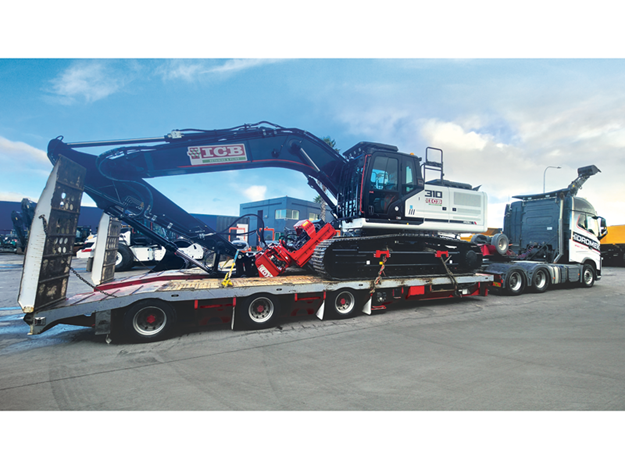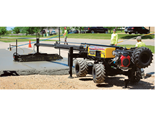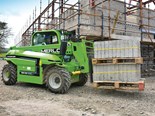Cover story: ICB Retaining & Piling
ICB Retaining & Piling’s latest project at Auckland Airport sees it bringing in some of the finest machinery of its fleet
 |
|
The Hidromek HMK 145 LCSR H4 has an operating weight of 16,600kg
|
For those in the know, ICB Retaining & Piling Ltd (ICB) is regarded as one of the top-tier civil construction businesses in the country, especially when it comes to jobs that need significant amounts of earth kept in place.
Established in the 1980s, the business originally cut its teeth in Wellington before moving to Auckland in the mid-1990s. Their specialist skills for retaining wall construction quickly gained ICB a solid reputation for quality work in often tricky environments.
Fast forward to today and ICB plant and equipment can be seen on any manner of high-profile projects across the region and beyond, almost always on jobs that are within the capability of just a handful of contractors.
Latest project
-(1).png) |
|
Three Hidromeks working at Auckland Airport
|
One of their latest projects couldn’t be more conspicuous as ICB machinery works front and centre at New Zealand’s largest public transportation facility, Auckland’s international airport.
It’s here that the business is undertaking work to support the creation of a stormwater system that will eventually be a new taxiway and aircraft parking apron.
Due to the high water table in the area, over a period of about eight months, ICB staff will sheet pile the perimeter of 47 pits that will allow safe excavation and installation of 47 manholes to handle the rainwater runoff of a huge concreted area.
"We will be doing the job in stages of six or seven pits at once," says ICB construction manager Gary Cooke.
"Then we will leave them to construct the manholes and return when the next stage is ready."
While it’s probably not the most technically advanced project ICB has undertaken in recent years, the job requires careful coordination, safe operating practices, and precision work, all under the watchful eye of an environmentally conscious customer.
Getting down to business
As one would expect, by the time a machine has excavated down a couple of metres, water becomes a serious issue to contend with and it’s here that Hidromek excavators have been paired with ICB’s specialist skills to install the sheet piling.
The business end of a sheet pile requires a serious piece of piling kit, powered by an equally serious machine that has the hydraulic stamina to deliver those ground, inducing blows to Mother Earth.
On this particular job, ICB has brought in three of their Hidromek excavators, all tasked with individual duties. First up, the largest of the white-and-black-coloured machines onsite is the recently set up HMK 310 LC H4.
 |
|
The HMK310LC H4 is fitted with a Movax side grip pile driver
|
Weighing in at 32 tonnes, the machine was specifically ordered for the job and paired with a versatile Movax side grip pile driver. According to Gary, oil flow was a key consideration when the company went looking for an excavator to power the pile driver.
"To efficiently drive steel piles, it’s crucial to have as much power available as possible. The job itself involves piling lengths of six, nine, and 18 metres — the Hidromek 310 has good pumps and oil flow, so that was a key decider," says Gary.
 |
|
The HMK 310 LC H4 on its way to the first job
|
Hydraulic system specs show that the HMK 310 LC H4 runs two axial piston-type pumps outputting a maximum flow rate of 2 x 259 litres per minute "The machine is doing well in the ground it’s working in," says Gary.
"There are some hard layers around the four-metre mark and again at eight to nine metres, so it’s not straightforward working conditions." The second prime machine on the job is the Hidromek HMK 300 LC, which is used to lift the sheet piles into position.
.png) |
|
ICB’s Hidromek HMK300 LC has a rated Safe Working Load of 5000kg
|
Being a Gen 3 model, the 30-tonne machine is the first Hidromek Magnum Equipment delivered to ICB. Rated for a safe working load of 5000kg, the HMK 300 LC is also used to install the horizontally positioned steel whalers around the perimeter of each pit, these being used to add integrity to the piled structure.
The smallest of the three Hidromeks onsite is the versatile HMK 145 LCSR H4. Sitting on 500mm tracks, the 16,600kg bladed machine is used to move the sheets piles, excavation work, and general site housekeeping duties.
Being a short-radius machine, it’s well suited for staying close to the confines of its own tracks, which comes in handy when working close alongside other machinery.
Wrapping it up
.png)
With New Zealand being such a small market, globally speaking, Gary says it’s important to keep your reputation up by doing good work. "There’s a lot of trust in the industry here in New Zealand, which is quite different to overseas where I’ve spent a lot of my working life," he says.
"Having machinery suited to the task is just as important. The Hidromeks perform well and our operators like them."
What is sheet piling
For those unfamiliar with sheet piling, essentially it involves hydraulically driving lengths of interlocking steel into the ground, which are used to retain the earth (or water on waterside projects) behind and allow excavation to be carried out on the area in front of the sheet piles.
The beauty of the retaining method is that it can be temporary or permanent, is fast to install, sheets of steel can be bolted or welded together if the need arises to drive the piles in further, and often the steel piles can be removed and reused once the need to retain behind them has been satisfied.
Sometimes, horizontally placed steel whalers are added at set distances to assist with structural integrity.
For more information, visit magnumequipment.co.nz.
Find new and used heavy machinery for sale in NZ
Keep up to date in the industry by signing up to Deals on Wheels' free newsletter or liking us on Facebook.

.png)



.jpg)

